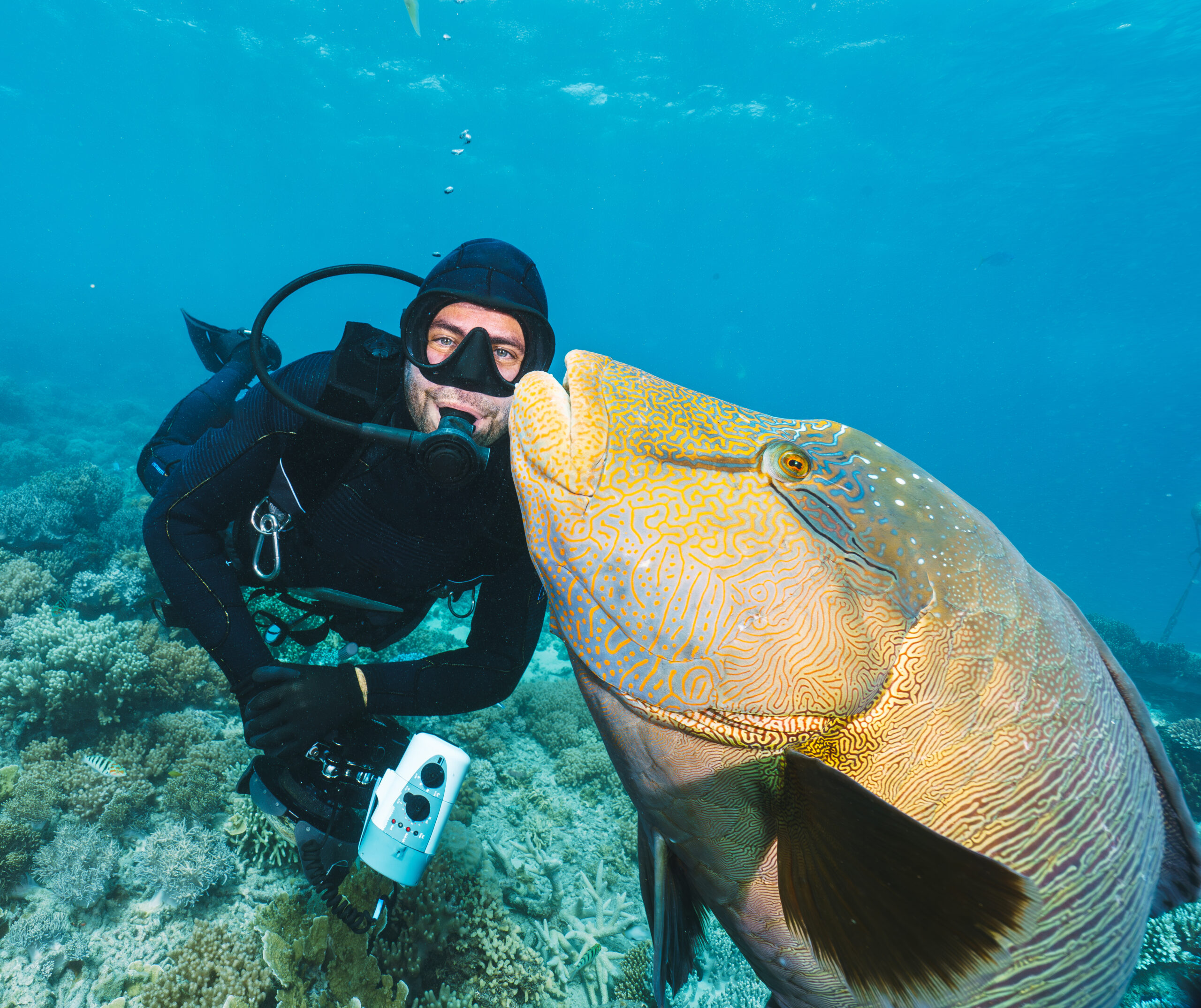Underwater photography is a mesmerizing art form that allows photographers to capture the beauty of marine life in its natural habitat. From vibrant coral reefs to schools of fish gliding through the water, the ocean is home to an array of stunning creatures. Whether you are a professional photographer or an amateur enthusiast, understanding the techniques of underwater photography and the behavior of sea animals can help you create breathtaking images. Underwater Photographer pose close to a maori wrasse.
The Basics of Underwater Photography
Underwater photography requires specialized equipment and techniques to compensate for the challenges posed by the aquatic environment. Unlike land-based photography, shooting underwater requires attention to factors such as light refraction, buoyancy, and water clarity.
Essential Equipment
To get started with underwater photography, you’ll need:
- A Waterproof Camera or Housing – High-quality DSLR or mirrorless cameras work best when enclosed in a waterproof housing. However, many modern action cameras, like the GoPro, are also capable of capturing stunning underwater images.
- Underwater Strobes or Lights – Water absorbs light quickly, reducing brightness and color contrast. Artificial lighting helps restore natural hues.
- Fins and a Buoyancy Control Device (BCD) – These helps maintain steady movement and positioning while shooting.
- Macro and Wide-Angle Lenses – Macro lenses are great for capturing details of tiny sea creatures, while wide-angle lenses help in photographing larger subjects like manta rays and sharks.
Lighting and Composition
Water scatters and absorbs light differently than air, leading to a blue-green color cast in photographs. To counteract this:
- Get as close as possible to the subject to minimize light distortion.
- Use artificial lighting or adjust the camera’s white balance settings.
- Avoid shooting directly downwards; instead, capture the subject at an angle for a more dynamic composition.
Capturing Sea Animals in Their Natural Habitat
The ocean is home to an incredible variety of marine life, each species exhibiting unique behaviors and patterns. Understanding these creatures can help photographers anticipate movements and take stunning shots.
Types of Marine Life to Photograph
1. Fish and Coral Reef Inhabitants
Fish are among the most photographed sea animals due to their vibrant colors and intricate patterns. Some notable species include:
- Clownfish – Known for their bright orange and white stripes, they are often found hiding among sea anemones.
- Angelfish and Butterflyfish – Their vivid hues make them favorite subjects for underwater photographers.
- Lionfish – Their dramatic, spiny fins create an impressive visual composition.
2. Large Marine Creatures
- Sharks – Majestic and often misunderstood, sharks can be safely photographed with proper guidance.
- Manta Rays – Their graceful movements make them a captivating subject, especially when captured in open water.
- Sea Turtles – Often found in tropical waters, they exude a calm and ancient presence.
3. Macro Marine Life
- Seahorses – Tiny yet fascinating, they require patience to photograph due to their slow movements.
- Nudibranchs – These small, colorful sea slugs are a favorite for macro photographers.
Tips for Ethical Underwater Photography
Respect for marine life is essential when photographing underwater. Follow these ethical guidelines:
- Never touch or disturb sea creatures.
- Avoid chasing animals, as this can cause stress and alter their natural behavior.
- Be mindful of fragile coral reefs and avoid damaging them with diving equipment.
- Support marine conservation efforts by sharing responsible photography practices.
Conclusion
Underwater photography offers a unique opportunity to explore and document the incredible world beneath the surface. By using the right equipment, mastering lighting techniques, and respecting marine life, photographers can capture stunning images that showcase the beauty and diversity of sea animals. Whether you’re fascinated by colorful coral reef fish or the majestic presence of sharks, the ocean is an endless source of inspiration for underwater photography enthusiasts.
